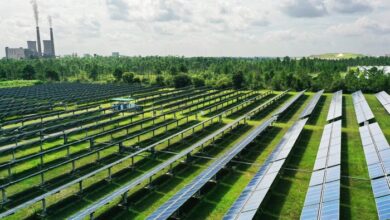
How Aid Could Benefit the Hungry: A Global Challenge
How aid could benefit the hungry is a question that has plagued the world for centuries. The statistics are stark: millions of people around the globe struggle with hunger and malnutrition, a reality rooted in poverty, conflict, and the ever-present threat of climate change.
But what if we could leverage aid to not only alleviate hunger but also build sustainable solutions for the future? This exploration dives into the complexities of hunger and the potential of aid to create a world where everyone has access to nutritious food.
From emergency food relief to long-term development programs, the world has implemented various aid strategies to combat hunger. This blog post will examine the effectiveness of these approaches, analyze their impact on food security, and discuss the role of technology in shaping a more sustainable future.
We’ll also explore the challenges and limitations of aid programs, while highlighting successful initiatives that have made a tangible difference in the lives of millions.
Understanding Hunger

Hunger is a complex issue that affects millions of people worldwide. It’s not just about feeling empty or lacking food; it’s about a lack of access to nutritious food that provides the necessary energy and nutrients for a healthy life.
Imagine a world where hunger isn’t a daily struggle. Aid could help break the cycle of poverty, which is often a root cause of hunger, as outlined in this insightful article causes of hunger are related to poverty.
By providing resources and opportunities, we can empower individuals and communities to overcome these challenges and create a brighter future where everyone has access to nutritious food.
Understanding the different levels of hunger and malnutrition, the global prevalence, and the root causes is crucial for addressing this issue effectively.
Levels of Hunger and Malnutrition
Hunger and malnutrition are often used interchangeably, but they represent different aspects of the same problem.
- Hungerrefers to the feeling of discomfort or weakness caused by a lack of food. It can be acute, meaning a temporary lack of food, or chronic, indicating long-term food deprivation.
- Malnutritionrefers to the condition that arises from an inadequate or unbalanced diet, leading to deficiencies in essential nutrients. It can manifest in different forms:
- Undernutrition: This is the most common form of malnutrition, characterized by a lack of sufficient calories and essential nutrients, leading to stunting, wasting, and micronutrient deficiencies.
- Overnutrition: This occurs when individuals consume excessive calories and unhealthy fats, leading to obesity and related health problems like diabetes and heart disease.
- Micronutrient Malnutrition: This refers to deficiencies in specific vitamins and minerals, such as iron, zinc, and vitamin A, leading to various health complications.
Global Prevalence of Hunger
The prevalence of hunger and malnutrition is a global issue, with millions of people struggling to access sufficient and nutritious food.
- According to the Food and Agriculture Organization of the United Nations (FAO), in 2021, approximately 2.3 billion people experienced moderate or severe food insecurity, meaning they lacked regular access to enough safe and nutritious food. This represents almost 30% of the global population.
- Around 828 million people, or 1 in 10 individuals, suffered from severe food insecurity, meaning they lacked sufficient food for an active and healthy life.
- Children are disproportionately affected by malnutrition. In 2020, an estimated 149 million children under five years old were stunted, 45 million were wasted, and 1.9 billion were affected by micronutrient deficiencies.
Root Causes of Hunger
Hunger is not a result of a lack of food production; rather, it’s a consequence of complex and interconnected factors.
- Poverty: Poverty is a major driver of hunger, as individuals living in poverty often lack the resources to afford nutritious food.
- Conflict: Conflict disrupts food production, supply chains, and access to markets, leading to food shortages and price increases. Displacement and forced migration also exacerbate food insecurity.
- Climate Change: Climate change impacts food production by affecting rainfall patterns, temperatures, and agricultural yields. Extreme weather events, such as droughts and floods, can devastate crops and livestock, leading to food shortages and price spikes.
- Inequality: Unequal access to resources, land, and education perpetuates hunger, as certain communities are systematically disadvantaged and lack the means to improve their food security.
- Lack of Infrastructure: Inadequate transportation infrastructure, storage facilities, and markets hinder the distribution and access to food, particularly in remote areas.
Types of Aid
Addressing hunger requires a multifaceted approach, and various types of aid are crucial in providing relief and fostering long-term solutions. Understanding the different types of aid and their effectiveness is vital for designing comprehensive strategies to combat hunger.
Emergency Food Relief
Emergency food relief provides immediate assistance to individuals and communities facing acute food shortages. This type of aid typically involves the distribution of food items like grains, beans, and oil, often in the form of food packages or meals.
- Advantages:Emergency food relief can quickly address immediate needs, preventing starvation and malnutrition in crisis situations. It is often the most effective way to save lives in emergencies like natural disasters or conflicts.
- Disadvantages:Emergency food relief is often temporary and does not address the root causes of hunger. It can also create dependency and hinder the development of sustainable food systems.
Long-Term Development Programs
Long-term development programs aim to address the underlying causes of hunger by promoting sustainable agriculture, improving nutrition, and strengthening food systems.
- Examples:These programs can include initiatives like providing farmers with access to seeds, fertilizers, and training, promoting food diversification, improving irrigation systems, and enhancing food storage and distribution infrastructure.
- Advantages:Long-term development programs can empower communities to become self-sufficient in food production and reduce their vulnerability to hunger. They contribute to economic growth and social development.
- Disadvantages:These programs often require significant investments and can take time to show tangible results. They also require effective coordination and collaboration among different stakeholders.
Cash Transfers
Cash transfer programs provide direct financial assistance to vulnerable households, enabling them to purchase food and other essential goods.
- Advantages:Cash transfers offer greater flexibility and empower recipients to make their own choices about how to spend the money. They can also stimulate local economies and promote market development.
- Disadvantages:Cash transfers can be vulnerable to inflation and may not be effective in addressing all the underlying causes of hunger. They also require careful monitoring and evaluation to ensure that the money is used appropriately.
Role of International Organizations and Governments
International organizations and governments play a crucial role in providing aid to address hunger. They provide funding, technical expertise, and coordination mechanisms to support national and local efforts.
- Examples:The World Food Programme (WFP) is a leading international organization in emergency food relief and development programs. The United Nations Children’s Fund (UNICEF) focuses on improving child nutrition and health. Governments often contribute to international aid efforts and also implement their own national programs to combat hunger.
Impact of Aid on Hunger: How Aid Could Benefit The Hungry

Aid plays a crucial role in addressing hunger and improving food security globally. It provides vital resources and support to vulnerable populations, contributing to the reduction of malnutrition and the enhancement of overall well-being. However, the effectiveness of aid in achieving these goals depends on various factors, including the type of aid provided, its implementation, and the context in which it is delivered.
Impact of Aid on Hunger Reduction
Aid programs aimed at addressing hunger have a demonstrable impact on reducing malnutrition and improving food security. These programs provide essential resources such as food, nutrition supplements, and agricultural inputs, which directly contribute to increased food access and consumption. Additionally, aid programs often focus on strengthening local food systems, promoting sustainable agriculture practices, and enhancing community resilience.
Successful Aid Initiatives
Several aid initiatives have successfully improved food access and nutrition in vulnerable communities. For example, the World Food Programme’s (WFP) school feeding programs provide nutritious meals to millions of children in developing countries, improving their cognitive development and overall health.
Furthermore, the International Fund for Agricultural Development (IFAD) has supported numerous projects that promote smallholder agriculture, empowering farmers and increasing their food production.
- School Feeding Programs:These programs provide meals to children, particularly in developing countries, improving their nutritional status and encouraging school attendance. The WFP’s school feeding program reaches millions of children globally, improving their health and education.
- Cash Transfers:These programs provide direct financial assistance to vulnerable households, allowing them to purchase food and other essential goods. Cash transfer programs have proven effective in increasing food security and reducing poverty.
- Agricultural Development Projects:Initiatives that promote sustainable agriculture practices, improve access to agricultural inputs, and enhance farmers’ skills contribute to increased food production and improved food security. The IFAD has supported numerous projects that have empowered smallholder farmers and increased their food production.
It’s heartbreaking to see people go hungry, and aid seems like the obvious solution. But there’s a darker side to the story, one that often gets overlooked: food aid as dumping , where surplus goods from developed countries end up flooding local markets, undermining local farmers and ultimately hindering long-term food security.
If we truly want to help the hungry, we need to find ways to support sustainable solutions that empower local communities and ensure food systems are resilient for the long haul.
Challenges and Limitations of Aid Programs
While aid programs have made significant contributions to reducing hunger, they face several challenges and limitations. One key challenge is ensuring that aid reaches those who need it most. Aid distribution systems can be complex, and corruption or lack of transparency can hinder the effectiveness of programs.
Challenges and Limitations
- Reaching the Most Vulnerable:Ensuring that aid reaches the most vulnerable populations can be challenging due to logistical constraints, conflict, and corruption.
- Sustainability:Many aid programs are short-term and may not address the underlying causes of hunger. This can lead to dependency on aid and a lack of sustainable solutions.
- Coordination and Collaboration:Effective aid delivery requires strong coordination and collaboration among various actors, including governments, NGOs, and international organizations. Lack of coordination can lead to duplication of efforts and inefficiencies.
Impact of Aid on Food Security, How aid could benefit the hungry
Aid programs have a significant impact on food security, which encompasses access to sufficient, safe, and nutritious food. By providing food assistance, promoting sustainable agriculture, and strengthening local food systems, aid programs contribute to improved food availability, access, utilization, and stability.
Impact on Food Security
- Food Availability:Aid programs increase food availability by providing food assistance, promoting agricultural production, and supporting food storage and distribution systems.
- Food Access:Aid programs improve food access by providing cash transfers, food vouchers, and other mechanisms that enable vulnerable households to purchase food.
- Food Utilization:Aid programs contribute to improved food utilization by promoting nutrition education, providing nutrition supplements, and supporting health services that address malnutrition.
- Food Stability:Aid programs enhance food stability by strengthening local food systems, promoting sustainable agriculture practices, and building community resilience to shocks and stresses.
Sustainable Solutions

While aid plays a crucial role in immediate relief, addressing hunger sustainably requires a shift towards long-term solutions that empower communities to become self-sufficient. This means fostering sustainable development, which promotes economic growth, social progress, and environmental protection in a balanced and equitable manner.
Strategies for Food Security and Hunger Reduction
To achieve sustainable food security and reduce hunger, a multi-faceted approach is essential. This involves investing in agriculture, strengthening local food systems, promoting sustainable farming practices, and improving access to education and healthcare. These strategies work together to create a resilient and equitable food system that can withstand shocks and challenges.
| Strategy | Description | Example |
|---|---|---|
| Investing in Agriculture and Rural Development | This involves supporting smallholder farmers, providing access to improved seeds, fertilizers, and irrigation technologies, and investing in infrastructure such as roads and storage facilities. | In Bangladesh, the “Monga” program has successfully reduced hunger by providing smallholder farmers with access to credit, training, and improved seeds. |
| Strengthening Local Food Systems | This includes promoting local markets, supporting food processing and distribution networks, and reducing food loss and waste. | In Mexico, the “Programa de Apoyo a la Producción para el Bienestar” (PAPPBI) provides direct payments to smallholder farmers, promoting local food production and consumption. |
| Promoting Sustainable Farming Practices | This involves adopting methods like agroforestry, conservation agriculture, and organic farming, which help protect the environment and enhance soil fertility. | In Kenya, the “Conservation Agriculture for Sustainable Livelihoods” project has demonstrated the effectiveness of conservation agriculture in improving soil health and increasing crop yields. |
| Improving Access to Education and Healthcare | Investing in education and healthcare empowers individuals and communities to make informed decisions about nutrition, health, and agriculture. | In India, the “Mid-Day Meal Scheme” provides free meals to school children, improving their nutritional status and encouraging school attendance. |
Empowering Communities for Self-Sufficiency
By addressing the root causes of hunger, we can empower communities to achieve self-sufficiency and break the cycle of poverty and food insecurity.
- Promoting Diversified Income Sources:Encourage communities to explore alternative income-generating activities beyond agriculture, such as handicrafts, tourism, and small businesses.
- Investing in Human Capital:Provide access to education, healthcare, and vocational training to enhance skills and knowledge.
- Strengthening Community Organizations:Support community-based organizations that promote food security, sustainable agriculture, and social development.
- Promoting Gender Equality:Empower women to participate in decision-making processes related to food security and agriculture.
- Protecting the Environment:Promote sustainable land management practices, conserve biodiversity, and mitigate climate change impacts.
Role of Technology
Technology is playing an increasingly vital role in the fight against hunger. From improving food production to enhancing distribution networks and providing early warning systems, technological advancements are offering innovative solutions to address the complex challenges of food insecurity.
Improving Food Production
Technology can significantly improve food production by increasing yields, reducing waste, and promoting sustainable practices.
- Precision Agriculture:This involves using sensors, drones, and data analytics to monitor crop health, soil conditions, and irrigation needs. By optimizing these factors, farmers can increase yields and reduce input costs.
- Improved Seed Varieties:Biotechnology and genetic engineering have led to the development of high-yielding, pest-resistant, and drought-tolerant crop varieties. These advancements contribute to increased food production and greater resilience to climate change.
- Vertical Farming:This innovative method allows for the cultivation of crops in stacked layers, maximizing space utilization and reducing reliance on land. Vertical farms can be located in urban areas, providing access to fresh produce in densely populated regions.
Facilitating Efficient Distribution
Technology can enhance the efficiency and effectiveness of food distribution networks, ensuring that food reaches those in need.
- Real-time Tracking:GPS technology and mobile apps allow for real-time tracking of food shipments, enabling organizations to monitor the movement of food aid and ensure its timely delivery.
- Cold Chain Management:Refrigeration and cold storage solutions are crucial for preserving the quality and safety of perishable food items during transportation and storage. Technology plays a vital role in maintaining the cold chain, reducing spoilage and waste.
- Mobile Payments:Mobile money platforms facilitate secure and convenient payments for food purchases, empowering vulnerable populations to access food directly and reducing reliance on traditional cash-based systems.
Early Warning Systems for Food Crises
Technology can help predict and respond to food crises by providing early warning systems and enabling timely intervention.
- Satellite Imagery:Satellite imagery can be used to monitor crop health, detect drought conditions, and assess the impact of natural disasters on agricultural production. This information allows for early identification of potential food shortages and triggers for humanitarian response.
- Data Analytics:By analyzing large datasets on weather patterns, market prices, and other relevant factors, organizations can identify emerging food security risks and predict potential crises. This data-driven approach enables proactive measures to mitigate the impact of food shortages.
- Mobile Communication:Mobile phones and social media platforms can be used to collect real-time information on food insecurity, share best practices, and coordinate humanitarian aid efforts. This enables rapid response and efficient allocation of resources.
Data Analytics and Artificial Intelligence
Data analytics and artificial intelligence (AI) offer powerful tools for addressing hunger.
- Predictive Modeling:AI algorithms can analyze vast amounts of data to predict food demand, anticipate price fluctuations, and identify vulnerable populations. This information can guide food aid programs and ensure targeted interventions.
- Precision Nutrition:AI-powered platforms can provide personalized dietary recommendations based on individual needs and preferences. This can help improve food choices, reduce malnutrition, and promote healthier eating habits.
- Optimizing Food Supply Chains:AI can optimize food supply chains by identifying inefficiencies, predicting demand fluctuations, and streamlining logistics. This leads to reduced food waste, improved distribution efficiency, and lower costs.






